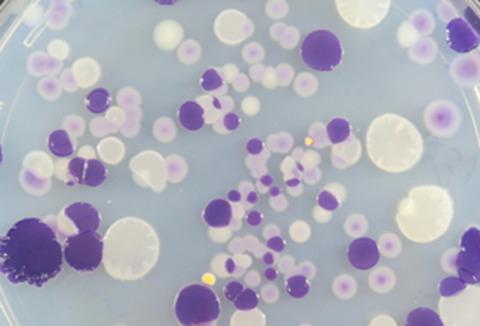当前位置:
X-MOL 学术
›
Funct. Ecol.
›
论文详情
Our official English website, www.x-mol.net, welcomes your
feedback! (Note: you will need to create a separate account there.)
Microbial rescue effects: How microbiomes can save hosts from extinction
Functional Ecology ( IF 4.6 ) Pub Date : 2020-01-21 , DOI: 10.1111/1365-2435.13493 Emmi A. Mueller 1 , Nathan I. Wisnoski 1 , Ariane L. Peralta 2 , Jay T. Lennon 1
Functional Ecology ( IF 4.6 ) Pub Date : 2020-01-21 , DOI: 10.1111/1365-2435.13493 Emmi A. Mueller 1 , Nathan I. Wisnoski 1 , Ariane L. Peralta 2 , Jay T. Lennon 1
Affiliation

|
Environmental change is occurring across the globe at an unprecedented rate. With atmospheric CO2 concentrations now exceeding 400 ppm (Blunden, Arndt, & Hartfield, 2018), global mean surface temperatures are rising (Stocker et al., 2013) and the world ocean is becoming more acidic (Gattuso et al., 2015). Habitat is being degraded and homogenized via land-use change while nutrient runoff from industrial-scale agriculture is expanding anoxic dead zones in coastal ecosystems (Foley, 2005; Stocker et al., 2013). Meanwhile, altered precipitation regimes are creating more intense and prolonged periods of drought and flooding that threaten our ability to reliably feed the growing human population (Trenberth, 2011). These and other global changes pose severe threats to the biodiversity of virtually all ecosystems on Earth. For species to persist in the face of widespread and rapid environmental change, it is important to identify biological mechanisms that can reverse trends of population decline. Some populations can achieve this by moving into more favourable habitats, for example, through the migration of heat-stressed individuals to sites at higher latitudes with cooler temperatures (Chen, Hill, Ohlemuller, Roy, & Thomas, 2011; Parmesan & Yohe, 2003). Received: 12 April 2019 | Accepted: 15 November 2019 DOI: 10.1111/1365-2435.13493
中文翻译:

微生物拯救效应:微生物组如何拯救宿主免于灭绝
环境变化正在以前所未有的速度在全球范围内发生。随着大气 CO2 浓度现在超过 400 ppm(Blunden、Arndt 和 Hartfield,2018 年),全球平均地表温度正在上升(Stocker 等人,2013 年),世界海洋的酸性越来越强(Gattuso 等人,2015 年)。栖息地正在通过土地利用变化而退化和同质化,而工业规模农业的养分径流正在扩大沿海生态系统中的缺氧死区(Foley,2005 年;Stocker 等人,2013 年)。与此同时,改变的降水状况正在造成更严重和更长时间的干旱和洪水,威胁我们可靠地养活不断增长的人口的能力(Trenberth,2011)。这些和其他全球变化对地球上几乎所有生态系统的生物多样性构成严重威胁。面对广泛而快速的环境变化,要使物种继续生存,重要的是要确定可以逆转种群下降趋势的生物学机制。一些种群可以通过迁移到更有利的栖息地来实现这一目标,例如,通过将受热应激的个体迁移到温度较低的高纬度地区(Chen、Hill、Ohlemuller、Roy 和 Thomas,2011;Parmesan 和 Yohe,2003 )。收稿日期:2019 年 4 月 12 日 | 接受:2019 年 11 月 15 日 DOI:10.1111/1365-2435.13493 通过热应激个体迁移到温度较低的高纬度地区(Chen、Hill、Ohlemuller、Roy 和 Thomas,2011 年;Parmesan 和 Yohe,2003 年)。收稿日期:2019 年 4 月 12 日 | 接受:2019 年 11 月 15 日 DOI:10.1111/1365-2435.13493 通过热应激个体迁移到温度较低的高纬度地区(Chen、Hill、Ohlemuller、Roy 和 Thomas,2011 年;Parmesan 和 Yohe,2003 年)。收稿日期:2019 年 4 月 12 日 | 接受:2019 年 11 月 15 日 DOI:10.1111/1365-2435.13493
更新日期:2020-01-21
中文翻译:

微生物拯救效应:微生物组如何拯救宿主免于灭绝
环境变化正在以前所未有的速度在全球范围内发生。随着大气 CO2 浓度现在超过 400 ppm(Blunden、Arndt 和 Hartfield,2018 年),全球平均地表温度正在上升(Stocker 等人,2013 年),世界海洋的酸性越来越强(Gattuso 等人,2015 年)。栖息地正在通过土地利用变化而退化和同质化,而工业规模农业的养分径流正在扩大沿海生态系统中的缺氧死区(Foley,2005 年;Stocker 等人,2013 年)。与此同时,改变的降水状况正在造成更严重和更长时间的干旱和洪水,威胁我们可靠地养活不断增长的人口的能力(Trenberth,2011)。这些和其他全球变化对地球上几乎所有生态系统的生物多样性构成严重威胁。面对广泛而快速的环境变化,要使物种继续生存,重要的是要确定可以逆转种群下降趋势的生物学机制。一些种群可以通过迁移到更有利的栖息地来实现这一目标,例如,通过将受热应激的个体迁移到温度较低的高纬度地区(Chen、Hill、Ohlemuller、Roy 和 Thomas,2011;Parmesan 和 Yohe,2003 )。收稿日期:2019 年 4 月 12 日 | 接受:2019 年 11 月 15 日 DOI:10.1111/1365-2435.13493 通过热应激个体迁移到温度较低的高纬度地区(Chen、Hill、Ohlemuller、Roy 和 Thomas,2011 年;Parmesan 和 Yohe,2003 年)。收稿日期:2019 年 4 月 12 日 | 接受:2019 年 11 月 15 日 DOI:10.1111/1365-2435.13493 通过热应激个体迁移到温度较低的高纬度地区(Chen、Hill、Ohlemuller、Roy 和 Thomas,2011 年;Parmesan 和 Yohe,2003 年)。收稿日期:2019 年 4 月 12 日 | 接受:2019 年 11 月 15 日 DOI:10.1111/1365-2435.13493











































 京公网安备 11010802027423号
京公网安备 11010802027423号